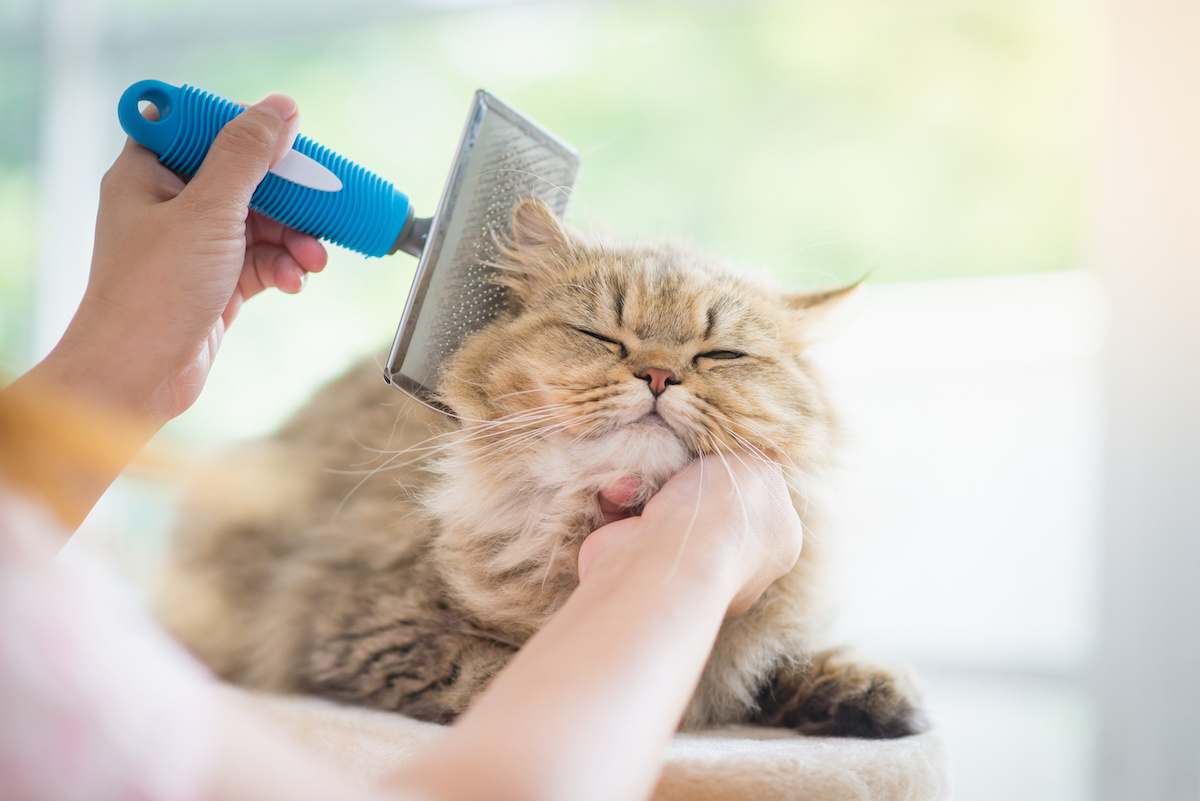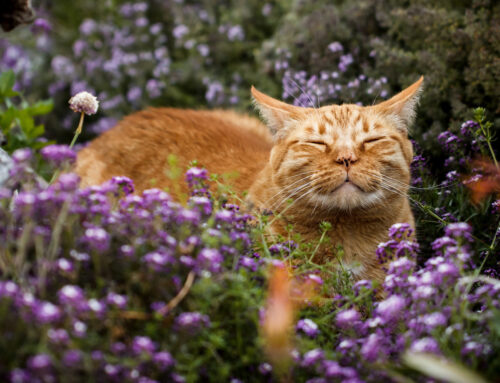A healthy coat doesn’t just make your pets look good but it also reflects their overall well-being. As pet owners, ensuring your furry companions have soft, clean, and healthy coats requires attention to grooming, nutrition, and regular veterinary care. Whether you have a dog, cat, or another furry friend, here are essential tips to help you maintain a healthy coat for pets.
Common Problems of Pets’ Coats
While maintaining a soft, clean, and healthy coat for pets is important for their overall well-being, many common coat and skin problems can pop up.
However, Identifying and addressing these issues promptly can prevent more severe health problems and ensure your pet remains comfortable and happy.
Here are some of the most common coat problems in pets and how to recognize and manage them:
1. Excessive Shedding
Excessive shedding is a common concern for many pet owners. While all pets shed to some degree, excessive shedding can indicate underlying issues.
Common causes include:
- Seasonal Changes: Pets often shed more during spring and fall as they transition between winter and summer coats.
- Poor Nutrition: A lack of essential nutrients, such as omega-3 fatty acids, can lead to dry, brittle fur and increased shedding.
- Stress: Stressful situations, such as moving to a new home or the introduction of a new pet, can cause temporary shedding.
- Medical Conditions: Conditions like hypothyroidism, Cushing’s disease, or skin infections can cause excessive shedding.
Management: Regular grooming, a balanced diet, and reducing stressors can help manage shedding. If shedding is excessive and persistent, consult your veterinarian to rule out medical issues.
2. Matting and Tangling
Matting occurs when hair becomes tangled and forms dense knots. This is particularly common in long-haired breeds. Unfortunately, matting can lead to discomfort, skin irritation, and infections.
Causes:
- Lack of Regular Grooming: Infrequent brushing allows tangles to develop into mats.
- Moisture: Wet fur can clump together and form mats, especially if not dried thoroughly.
- Movement and Friction: Areas subject to friction, such as behind the ears, armpits, and under the collar, are prone to matting.
Management: Regular brushing, especially after your pet gets wet, can prevent mats. Use detangling sprays and tools designed for your pet’s coat type. Severe matting may require professional grooming.
3. Dry and Flaky Skin
Dry, flaky skin, often referred to as dandruff, can cause itchiness and discomfort for pets.
This condition can be caused by:
- Poor Diet: Inadequate nutrition can lead to dry skin.
- Low Humidity: Dry indoor air, especially in winter, can affect your pet’s skin.
- Allergies: Environmental or food allergies can cause skin dryness and flakiness.
- Skin Infections: Bacterial or fungal infections can lead to dry, flaky skin.
Management: Ensure your pet has a balanced diet rich in essential fatty acids. Use a humidifier to maintain indoor air moisture. Regular grooming can help distribute natural oils. If allergies or infections are suspected, consult your veterinarian for appropriate treatment.
4. Bald Spots and Hair Loss (Alopecia)
Bald spots or patches of hair loss, known as alopecia, can be distressing and may indicate underlying health issues.
Common causes include:
- Parasites: Fleas, mites, and lice can cause intense itching, leading to hair loss.
- Infections: Bacterial, fungal, or yeast infections can result in localized hair loss.
- Hormonal Imbalances: Conditions like hypothyroidism or Cushing’s disease can cause widespread hair loss.
- Stress and Anxiety: Excessive grooming due to stress or anxiety can lead to hair loss.
Management: Treating the underlying cause is essential. This may involve parasite control, antifungal treatments, or addressing hormonal imbalances. Reducing stress through environmental enrichment and behavioral training can also help.

Ways to Keep a Healthy Coat for Pets
If you notice any of the issues above, then it’s best to consult with the team at the Animal Care Center. We’ll help you solve the pets’ coat problem with the best care.
However, there are multiple ways you ca avoid running into these problems. Take a look at the top ways to keep a healthy coat for pets below:
1. Regular Brushing
Brushing your pet regularly is fundamental to maintaining a soft and clean coat. It helps remove dirt, debris, and loose fur, preventing matting and tangling.
The frequency of brushing depends on your pet’s breed and coat type:
- Short-Haired Pets: Brush weekly to remove loose hair and distribute natural oils.
- Medium to Long-Haired Pets: Brush several times a week to prevent mats and tangles.
- Double-Coated Breeds: Brushing daily during shedding seasons (spring and fall) helps manage excessive shedding.
Use appropriate brushes and combs suited to your pet’s coat type to avoid skin irritation and ensure effective grooming.
2. Bathing with Care
Regular baths are essential for keeping your pet’s coat clean and smelling fresh. However, over-bathing can strip natural oils from the skin, leading to dryness and irritation.
Follow these tips for effective bathing:
- Choose the Right Shampoo: Use a mild, pet-specific shampoo recommended by your veterinarian. Avoid using human shampoos as they can disrupt your pet’s skin pH balance.
- Water Temperature: Use lukewarm water to bathe your pet, as hot water can dry out their skin.
- Thorough Rinse: Rinse your pet thoroughly to remove all shampoo residue, which can cause itchiness.
- Drying: Towel-dry your pet gently and use a pet dryer on a low setting if necessary. Ensure they are completely dry, especially in colder months, to prevent skin infections.
3. Nutritious Diet
A balanced diet is crucial for maintaining a healthy coat from within.
Ensure your pet’s diet includes:
- Proteins: High-quality proteins from meat sources help maintain healthy skin and coat.
- Omega-3 and Omega-6 Fatty Acids: Essential fatty acids found in fish oil or specific pet foods promote coat health and reduce inflammation.
- Vitamins and Minerals: Adequate vitamins and minerals, such as Vitamin E and zinc, support skin health and coat quality.
Consult your veterinarian for recommendations tailored to your pet’s breed, age, and health status.
4. Regular Veterinary Visits
Routine veterinary visits are not only for vaccinations but also for comprehensive health checks, including skin and coat assessments. Thankfully, veterinarians can identify early signs of skin issues, allergies, or parasites that affect coat health. They may recommend preventive treatments like flea control and supplements to enhance coat condition.
5. Exercise and Mental Stimulation
Physical activity and mental stimulation are vital for overall pet health, including coat condition. Regular exercise improves circulation, which promotes healthier skin and coat. Mental stimulation reduces stress levels, preventing stress-related shedding and coat dullness.
6. Environmental Factors
Environmental factors such as weather conditions and indoor air quality can affect your pet’s coat:
- Sun Protection: Protect pets with light-colored coats or exposed skin from excessive sun exposure to prevent sunburn and skin damage.
- Allergens: Minimize exposure to allergens like pollen or dust that can cause skin irritation and coat problems.
- Indoor Air Quality: Maintain a clean indoor environment to reduce dust and allergens that can affect your pet’s skin and coat.
7. Special Considerations for Different Pets
Each pet species and breed may have specific coat care needs:
- Dogs: Some breeds, like retrievers or terriers, may require regular trimming or grooming specific to their coat type.
- Cats: Regular grooming helps prevent matting, hairballs, and skin issues. Use a cat-specific brush and handle grooming sessions gently to avoid stress.
- Small Mammals: Guinea pigs, rabbits, and ferrets benefit from occasional brushing and dust baths to keep their coats clean and healthy.
8. Grooming and Hygiene Practices
In addition to brushing and bathing, regular grooming practices include:
- Ear Cleaning: Clean ears gently with a veterinarian-recommended solution to prevent infections.
- Nail Trimming: Keep nails trimmed to a comfortable length to prevent overgrowth and discomfort.
- Dental Care: Brush your pet’s teeth regularly and provide dental chews or treats to maintain oral health, which contributes to overall well-being, including coat condition.
9. Monitor for Signs of Coat Issues
Be vigilant for signs of coat problems such as excessive shedding, dryness, flakiness, bald patches, or changes in coat texture or color. These could indicate underlying health issues requiring veterinary attention.
10. Patience and Consistency
Maintaining a soft, clean, and healthy coat for your pet requires patience and consistent care. Establish a grooming routine early in your pet’s life to acclimate them to handling and grooming practices.

Don’t Skip the Steps to a Health Coat for Pets You Love
By integrating these tips into your pet care routine, you can help ensure your furry companion maintains a beautiful and healthy coat throughout their life.
Remember, each pet is unique, so tailor your grooming and care practices to meet their individual needs.
If you have questions about keeping a healthy coat for pets, reach out to our team at the Animal Car Center!






